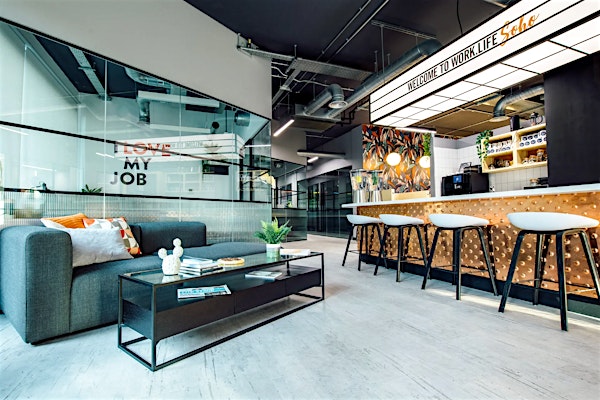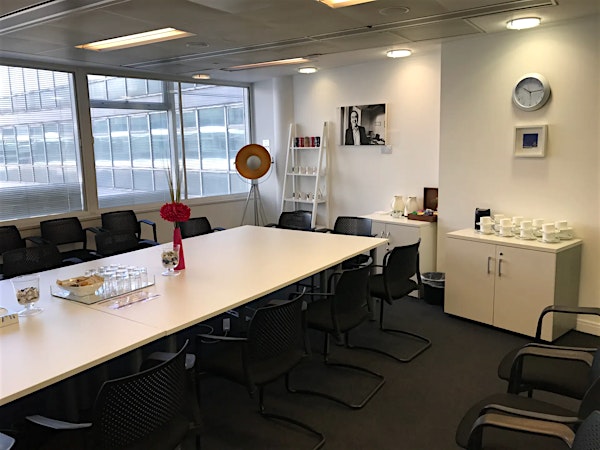How Much Does a Commercial Lease REALLY Cost in London? (Hidden Fees Exposed)
Think renting an office in London is all about the monthly rent figure on the brochure? Think again. Many businesses step into a commercial lease expecting predictable costs, only to face an avalanche of unexpected fees. The real price often ends up far higher than planned for both service charges and insurance premiums.
The challenge is not just knowing how much commercial lease cost London today, but understanding every hidden clause that drains your budget. These extra expenses can quietly eat into your profits when you have a business in a city where space already comes at a premium price.
In this guide, we will break down the numbers, expose the office rent hidden costs UK landlords rarely highlight, and show what to watch for before signing.
The Advertised Price vs The Real Price
Commercial property ads in London often show an attractive headline figure, usually expressed as a rate per square foot. On paper, it can make even premium offices look surprisingly affordable, especially when compared to other prime city locations.
But this headline number rarely reflects what you will actually pay once the contract is signed. The per square foot calculation often excludes essential costs like service charges and insurance premiums.
It’s actually a classic marketing tactics that show the lowest possible figure to generate interest, the reveal the extras later. In many cases, the jump from the quoted rate to the real cost can reach 40 to 60 percent.
This means that a space advertised at £60 per square foot might actually cost closer to £90 in reality. Without digging deeper into the breakdown, tenants risk underestimating the true commercial lease fees London by thousands each year.
The 12 Hidden Costs of London Commercial Leases
The figure you see on a letting agent’s brochure rarely tells the whole story. London commercial leases carry a long list of extras that can catch tenants off guard. Some are predictable, while others appear only after you’ve signed the contract.
Legal Fees: For a start, there are legal fees. Both you and the landlord will have solicitors, and the combined bill often sits somewhere between £2,000 and £8,000. If the lease is complex, it can easily creep higher.
Survey Costs: Before signing, many tenants arrange a survey. It’s money well spent, but expect to part with £500 to £2,000 for a detailed inspection, depending on the size and age of the building.
Business Rates: Then there are business rates. In central London, these range from £15 to £45 per square foot each year. In some postcodes, they rival the rent itself.
Service Charges: You will also face service charges, usually to cover communal maintenance, cleaning, and security. These typically sit between £8 and £20 per square foot annually.
Insurance Requirements: Insurance is another line item. Most landlords expect you to pay for cover, often £300 to £1,500 a year.
Deposit or Guarantee: Don’t forget the deposit or guarantee. Many agreements demand six to twelve months’ rent upfront. That’s a large chunk of capital tied up before you even move in.
Fit-Out Costs: The fit-out is where costs can rocket. Basic changes might be £25 per square foot, while high-spec designs can hit £150 or more.
Utilities Setup: Utilities aren’t free to set up either. Installing electricity, water, and telecoms can cost £200 to £800 per service, before you even start paying monthly bills.
Dilapidations Reserve: Savvier tenants set aside a dilapidations reserve, usually 10 to 15 per cent of annual rent to handle end-of-lease repair obligations.
Rent Reviews: Every few years, there’s a rent review. These negotiations can involve legal help, which is an invitation to more expenses.
Break Clause Fees: If your lease includes a break clause, ending it can still cost between £1,000 and £5,000, and there may be extra conditions to meet.
Exit Dilapidations: Restoring a property to its original state can cost £10,000 to £50,000 or more. Older spaces often cost the most.
When you add these together, the true commercial lease fees London tenants face can be a world away from the price they first saw.
Real Cost Breakdown by London Area
Costs vary sharply across London. In the City of London, expect £85–£120 per square foot, while Canary Wharf comes in at £65–£95. Shoreditch/Tech City averages £55–£85, and King’s Cross sits around £60–£90. In outer London, prices drop to £35–£65. These figures include common extras like rates and service charges, but remember, the real commercial lease fees London tenants face will still depend on the lease terms and how well you manage hidden costs.
Flexible Office Solutions: Transparent Pricing
Flexible offices are easier to budget for because the rent often covers utilities, internet, cleaning, and reception. This means tenants avoid many office rent hidden costs UK leases include, such as service charges or repair bills. While the monthly rate may seem higher than a standard lease, there’s no large deposit, legal bill, or fit-out cost to pay. For small and mid-sized businesses, it keeps costs predictable, lowers risk, and can work out better value in the long run.
How to Negotiate Better Lease Terms
Not all costs are set in stone. Service charges, rent-free periods, and help with fit-out costs are often open to negotiation. Business rates and insurance, however, are usually set and harder to change. You can have a better chance to get a good deal when the market is quiet and demand is low.
Before that, make sure you always read the lease in detail and look out for problem clauses, such as vague repair terms or complicated break conditions. If you find the agreement tying you to high costs with little room to adapt, it’s better for you to walk away. Signing up for something like this can harm your business.
Alternative Solutions That Make Financial Sense
Flexible offices can save money in many ways. These offices come with all utilities, cleaning and internet costs all in one clear monthly price. Part-time offices also work better for teams that only need space on certain days, which helps cut the unnecessary costs.
Sharing space with another business reduces rent and bills while keeping a professional setup. As your team grows, you can easily scale up in a flexible agreement that avoids the heavy expenses of a long lease. Do you also want transparent pricing with no hidden fees? See FlowSpace’s all-inclusive rates and calculate your savings.











